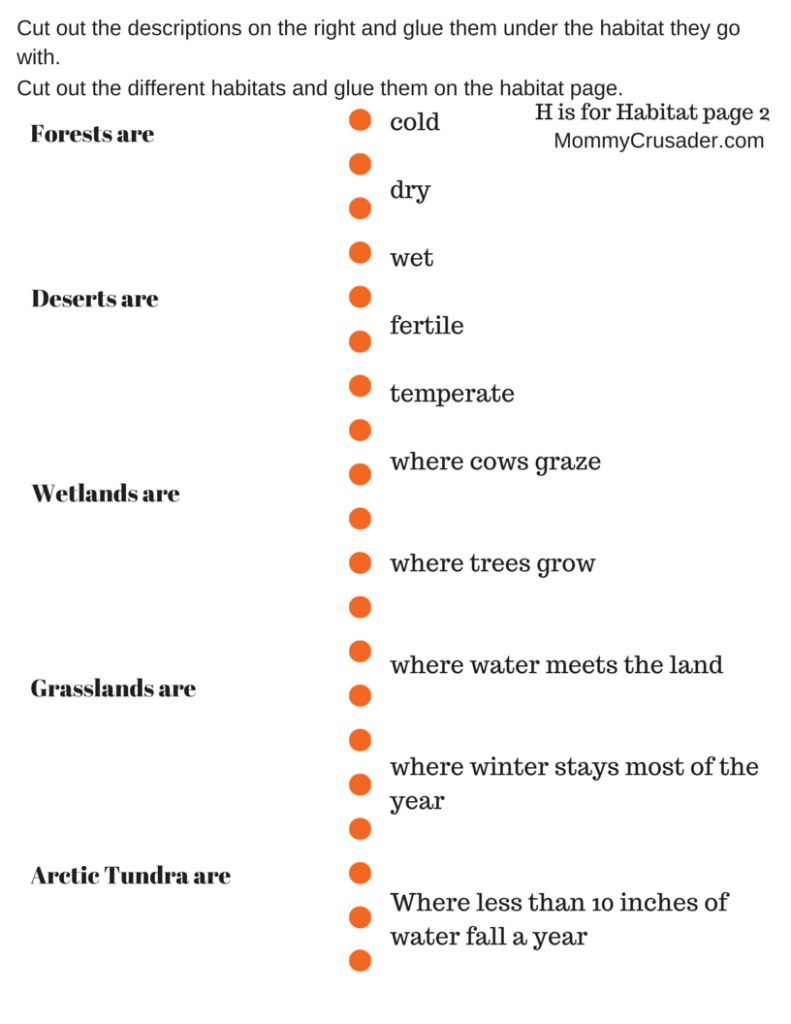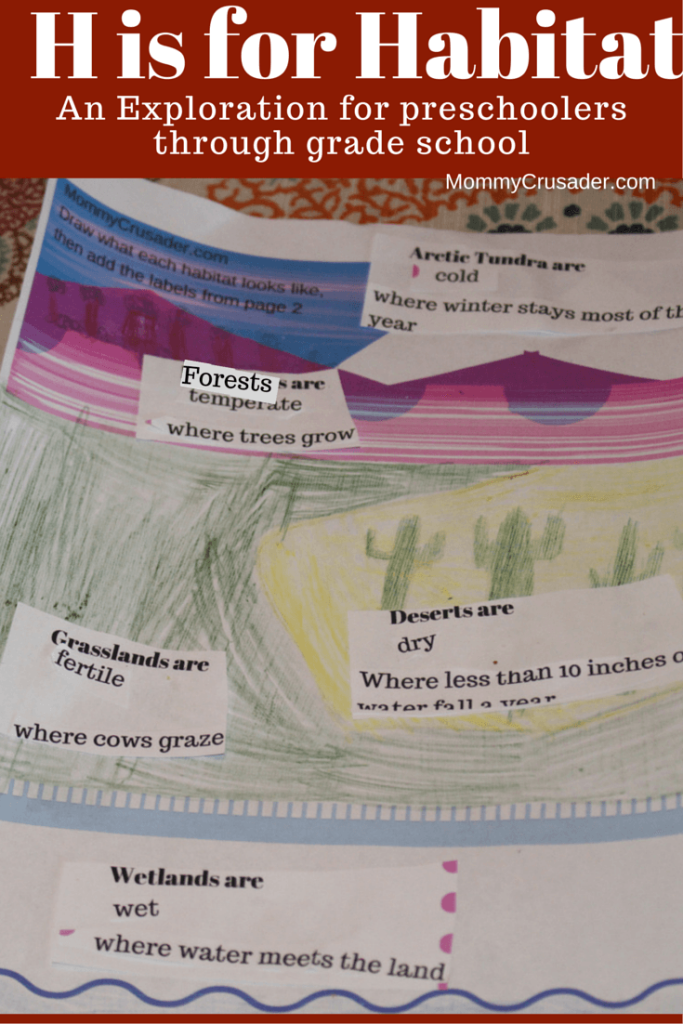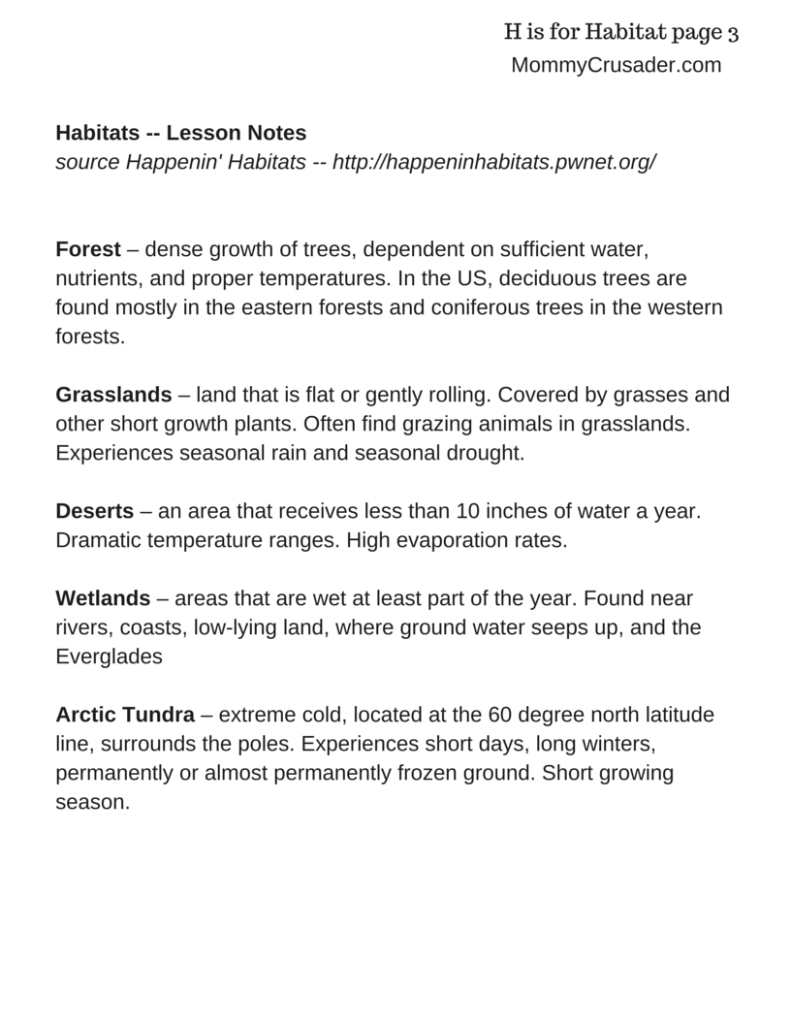As part of our preschool unit this week, we are working on the letter H. I wanted to include some earth science this month in our preschool unit – so, this week, H is for Habitat.
After building a topography map of our state, we took a day and talked about the five different habitats, and which habitats are most commonly found in our state. I completed this activity with children ages 4 to 9. They all were able to complete the coloring portion of the activity. However, the labeling portion was too difficult for my preschooler and Kindergartner to complete by themselves. My second grader and fourth grader, however, were able to complete the labeling portion without any issues.
Objective:
To teach children about the five types of habitats and some of their defining characteristics.
Materials:
Colored pencils or crayons
Scissors
Glue
1 copy of the H is for Habitat worksheet pages 1 and 2 for each child.


1 copy of the H is for Habitat worksheet page 3 (Lesson Notes) for the instructor.
Method:
Start by passing out H is for Habitat page 1 to each child.
Have the children color in the habitat areas as they are described. The white mountains represent the Arctic Tundra; the purple and red mountains represent the forest habitat (because that’s how forests look where we are from); the yellow boxed area represents the desert habitat; the other part next to the desert area represents the grassland habitat; finally, the area next to the blue line represents the wetlands habitat. (The blue line represents a river.) The lesson notes included in the printable are basic information and intended for a preschool level. More detailed descriptions of the habitats are available at the website listed on the lesson notes page.
After the children have completed coloring in their habitats, it’s time to have them cut out and label the habitats.
Start by having the children cut page two, following the dotted line. Then have the children cut out the descriptions from the page and glue them under the habitat they describe. There is a word and a sentence for each habitat.
Here’s the key for the worksheet.
| Arctic Tundra | Cold | where winter stays most of the year |
| Desert | Dry | Where less than 10 inches of water fall a year |
| Wetlands | Wet | where water meets the land |
| Grasslands | Fertile | where cows graze |
| Forest | Temperate | where trees grow |
Once the descriptions are glued under the habitat types (younger children will need help successfully doing this), then have the children cut out the labels and glue the labels on page one of the H is for Habitat worksheet.
This activity took about an hour for my four children to finish. They all enjoyed coloring in page one, especially my fourth grader. She started drawing habitat specific plants in her desert. It was fun to watch her take her time and really work hard on this activity. We also had some cross-grade conversations about habitats. This was a great earth science activity for all the ages of my children.



